Creative Fun Sunday School Activities Children Love
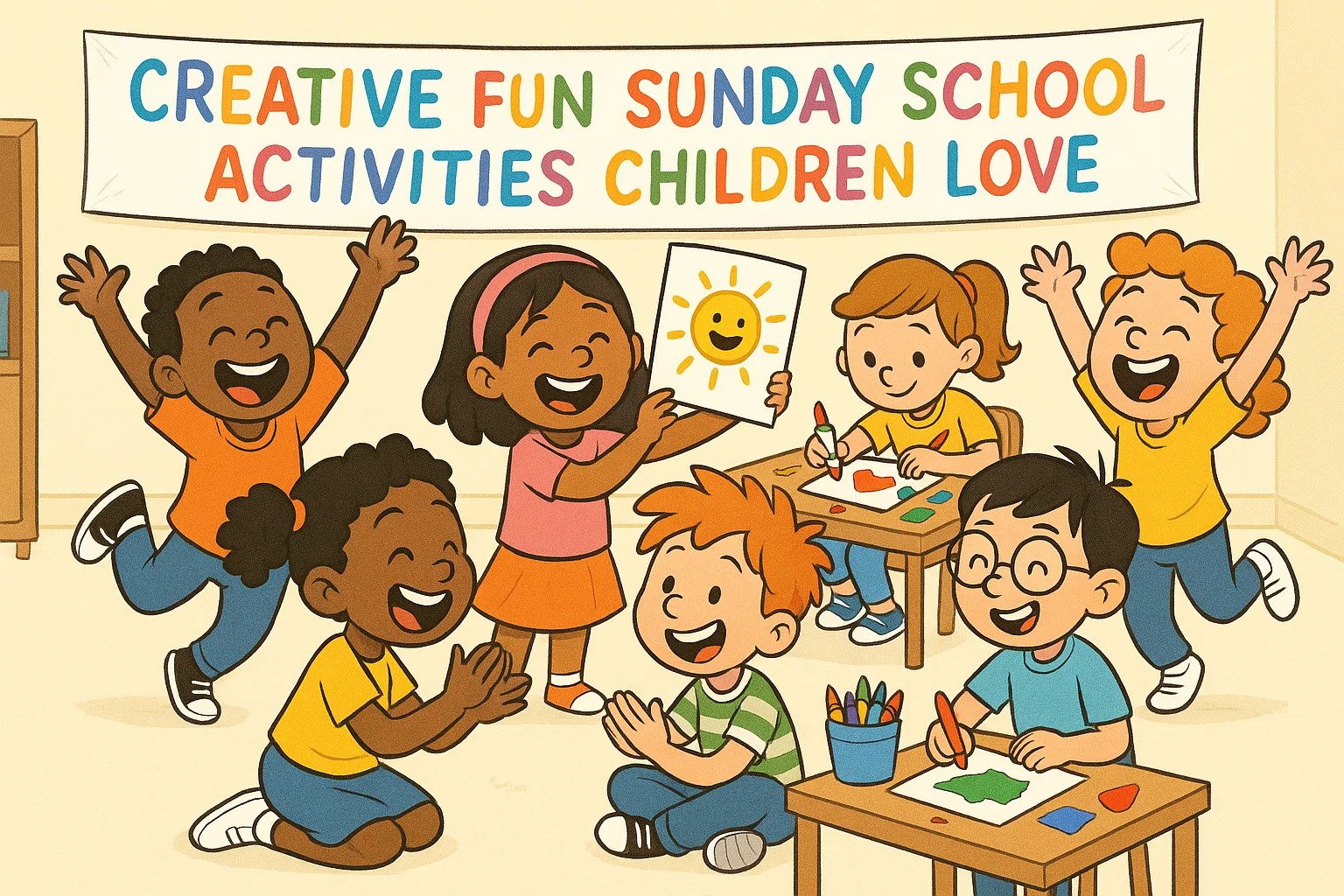
Teaching Bible stories and Christian values to children doesn’t have to feel like a lecture. When you combine scripture with interactive games and hands-on activities, kids naturally absorb lessons while having genuine fun. Research from the Journal of Educational Management and Instruction shows that children retain more information when they actively participate in learning, making these engaging approaches essential for effective Sunday school ministry.
Whether you’re working with preschoolers or teenagers, the right activity can transform your class from passive listening into an adventure that kids eagerly anticipate each week. Let’s explore proven strategies that bring Bible stories to life and create lasting spiritual memories.
Engaging Sunday School Games for All Ages
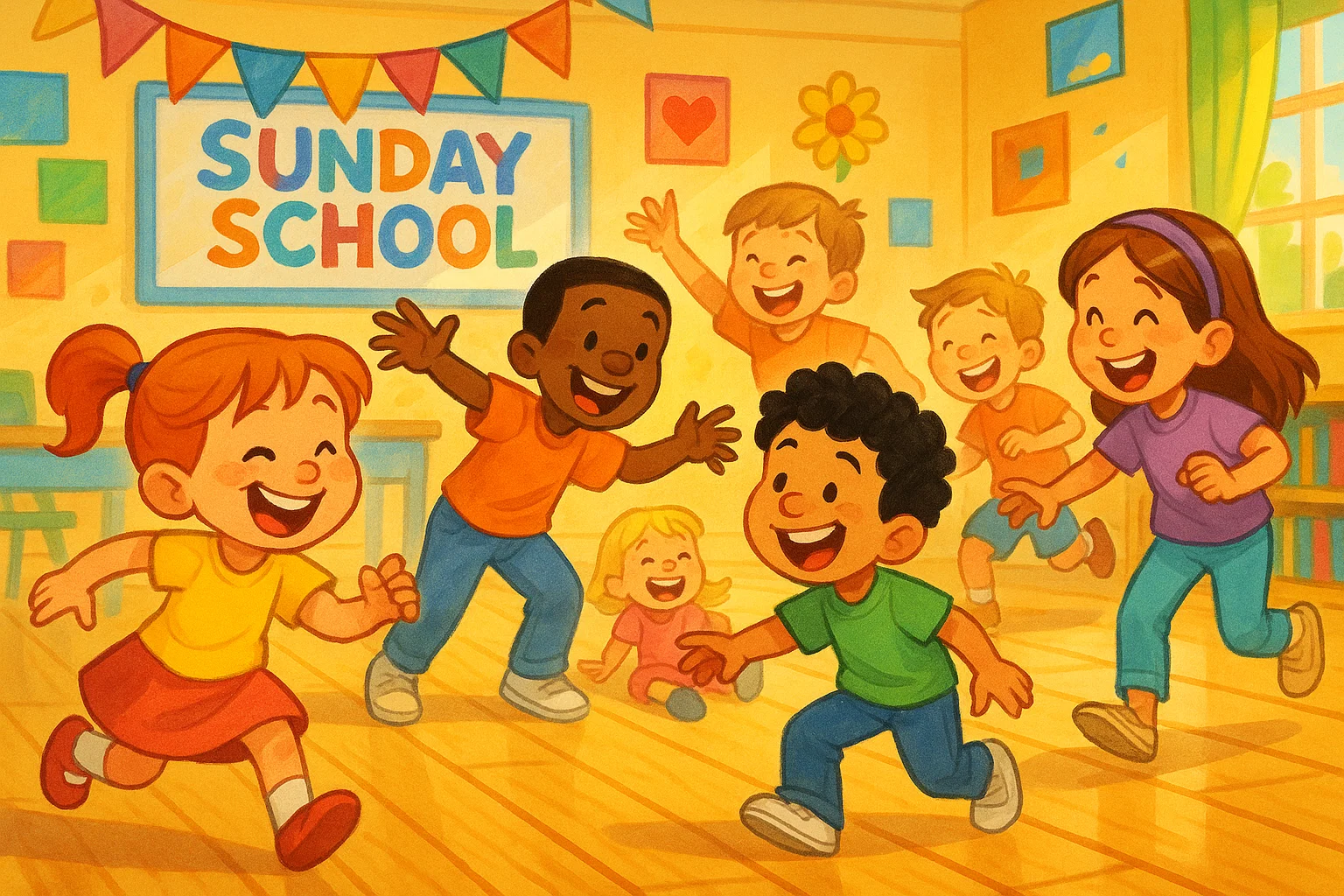
Interactive games serve as powerful teaching tools that help children connect with biblical principles while building community within your class. These activities work particularly well because they appeal to different learning styles and keep energy levels high throughout your lesson.
Essential supplies for most Bible games:
- Bibles or Bible story books
- Timer or stopwatch
- Small prizes or stickers
- Whiteboard or flip chart
- Soft ball or bean bag
- Index cards for questions
Bible Relay Race 🏃♀️
Transform your classroom into an action-packed learning environment with this high-energy team activity. Divide your class into small teams of 3-4 students and set up stations around the room, each featuring a different Bible-related challenge.
Start by having teams race to find specific scripture verses in their Bibles. Once they locate the passage, they must run to the front and recite it correctly before the next team member can begin. You can modify this game by including physical challenges like hopping on one foot while carrying a “stone” (representing David’s stones) or walking carefully with a cup of water (symbolizing Jesus walking on water).
For younger children, use picture cards instead of written verses. This adaptation ensures every child can participate regardless of their reading level. The key is maintaining excitement while reinforcing the lesson’s central message through repetitive, physical engagement.
Scripture Scavenger Hunt 🔍
Create an investigative adventure that turns your entire church space into a learning laboratory. Hide Bible character clues throughout different rooms, each leading to the next location where teams will discover scripture references and story details.
Design clues that require children to work together and think critically about the stories they’ve learned. For example, “Find the place where people gather to sing praises” (leading them to the sanctuary) or “Look where the pastor prepares God’s word” (directing them to the office). At each location, teams collect puzzle pieces that eventually form a complete Bible verse or story summary.
This activity works exceptionally well for reinforcing story sequences and helping kids understand how different biblical events connect. Teachers often report that children remember scavenger hunt lessons months later because the physical movement and problem-solving create strong memory associations.
Classic Bible Trivia
Structure your trivia to accommodate different age groups and knowledge levels within the same class. Create categories like “Bible Heroes,” “Amazing Miracles,” and “Wise Sayings” with varying difficulty levels marked by different colored question cards.
Sample trivia categories by age group:
- Ages 4-6: Bible animals, simple stories, Jesus’s friends
- Ages 7-10: Miracles, parables, Old Testament heroes
- Ages 11-14: Geography, chronology, deeper character studies
Use a point system that rewards both correct answers and good sportsmanship. Children who encourage teammates or help others can earn bonus points, reinforcing Christian values of kindness and support. Consider implementing a “lifeline” system where teams can ask for hints or consult their Bibles for particularly challenging questions.
Biblical Pictionary 🎨
Transform abstract Bible concepts into visual fun by having children draw everything from the parting of the Red Sea to the fruits of the Spirit. This game naturally accommodates different artistic abilities since the goal is communication, not artistic perfection.
Create categories that span different types of biblical content: characters (Moses, Mary, Peter), objects (ark, cross, crown), actions (praying, helping, forgiving), and concepts (love, faith, hope). Use a timer to maintain energy, but be flexible with time limits for younger artists who need extra moments to complete their drawings.
One particularly effective variation involves having children draw story sequences. Divide a large paper into panels and have teams collaborate to illustrate an entire Bible story from beginning to end. This approach reinforces story structure while encouraging teamwork and creative expression.
Ten Commandments Hot Potato 🔥
This energetic twist on the classic childhood game helps children memorize God’s fundamental rules for living. Create a playlist of uplifting Christian music and pass a soft ball or stuffed animal around the circle while music plays.
When the music stops, the child holding the object must recite one of the Ten Commandments or explain what it means in their own words. To prevent anxiety, establish a supportive environment where other children can offer hints if someone gets stuck. This creates a collaborative learning atmosphere rather than competitive pressure.
Expand the game by including discussion about how each commandment applies to modern childhood situations. For instance, when discussing “Honor your father and mother,” children can share specific ways they show respect at home or school. These personal connections make ancient wisdom relevant to contemporary life.
Hands-On Projects and Crafts
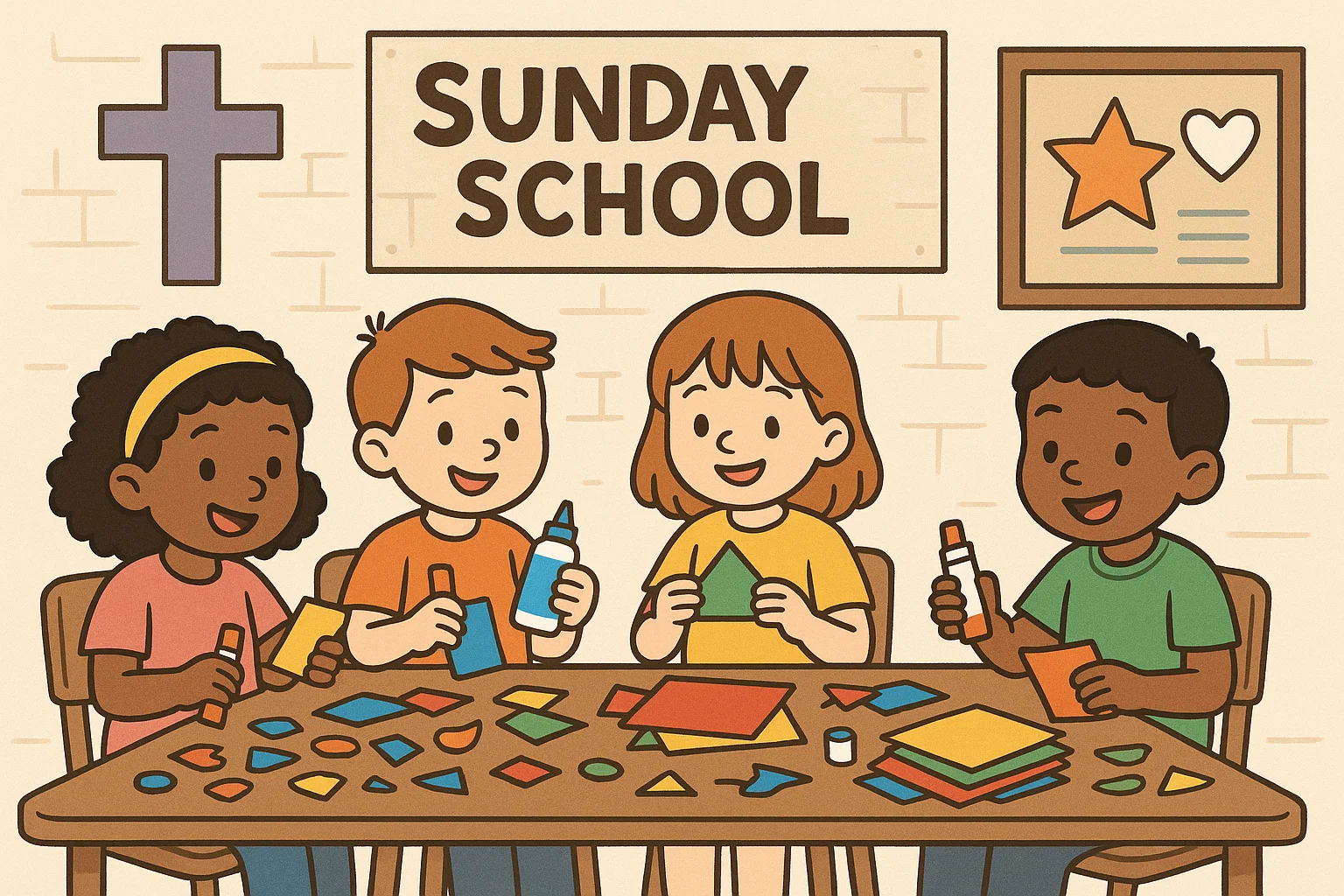
Physical creation engages children’s natural desire to build and make things while reinforcing spiritual lessons through tangible reminders they can take home. These projects work particularly well because they provide concrete symbols of abstract concepts.
Build a Tower Challenge 🏗️
Channel the Tower of Babel story into a collaborative engineering experience that teaches humility and teamwork. Provide teams with identical building materials: marshmallows, spaghetti noodles, tape, and string. Challenge them to construct the tallest free-standing tower within a set time limit.
As teams work, circulate and observe their collaboration styles. Some groups will naturally share leadership while others might struggle with competing ideas. Use these observations as discussion points about pride, cooperation, and listening to others—key themes from the original biblical story.
After the building phase, don’t simply measure heights and declare winners. Instead, lead a reflection on what made teams successful: communication, patience, willingness to rebuild when something collapsed. Connect these insights to how God desires us to work together as his people, building his kingdom through humble service rather than self-promotion.
Full Armor Of God Craft ⚔️
Help children understand spiritual protection by creating wearable armor pieces based on Ephesians 6:10-18. Use cardboard, aluminum foil, and colorful decorations to craft shields, breastplates, helmets, and swords that children can actually wear.
Materials needed for armor craft:
- Large cardboard pieces (cereal boxes work well)
- Aluminum foil for metallic finish
- Markers, crayons, or paint for decoration
- Scissors and glue sticks
- Ribbon or yarn for ties
- Bible verses printed on small cards
As they construct each piece, discuss its spiritual significance. The belt of truth becomes a conversation about honesty in daily life. The breastplate of righteousness leads to discussions about making good choices even when friends pressure them differently. The shield of faith opens opportunities to talk about trusting God during difficult times.
This craft succeeds because it provides visual and tactile reinforcement of abstract spiritual concepts. Children often continue wearing or displaying their armor pieces at home, creating ongoing opportunities for family discussions about spiritual growth and protection.
Thankfulness Challenge 🙏
Design a month-long gratitude project that helps children develop a consistent prayer habit while recognizing God’s daily blessings. Provide each child with a decorated jar or box along with colorful paper strips for writing daily thankfulness notes.
Encourage families to participate by making this a dinner table activity where everyone shares something they’re grateful for before writing it down. Set specific challenges like “find something in nature to be thankful for” or “notice someone being kind and thank God for their heart.”
At the end of the month, children can share their most meaningful discoveries with the class. Many teachers report that parents notice significant changes in their children’s attitudes and prayer lives through this simple but powerful practice. The visual accumulation of blessings helps kids see God’s ongoing presence in their daily experiences.
Salvation Balloons 🎈
Create a memorable visual representation of salvation using balloons to represent the weight of sin and the freedom found in Christ. Give each child a dark-colored balloon to inflate, representing the burden of wrongdoing that separates us from God.
Have children attach small paper weights (representing specific sins or mistakes) to their balloons using string. As you discuss how these burdens affect our relationship with God and others, children physically feel the weight pulling down their balloons.
The powerful moment comes when you introduce the gospel message and invite children to “release” their burdens to Jesus. As they let go of the weights, their balloons rise freely—a tangible demonstration of forgiveness and spiritual freedom. This simple metaphor often creates lasting memories that children reference years later when discussing their faith journey.
Engaging Storytelling and Skits 🎭
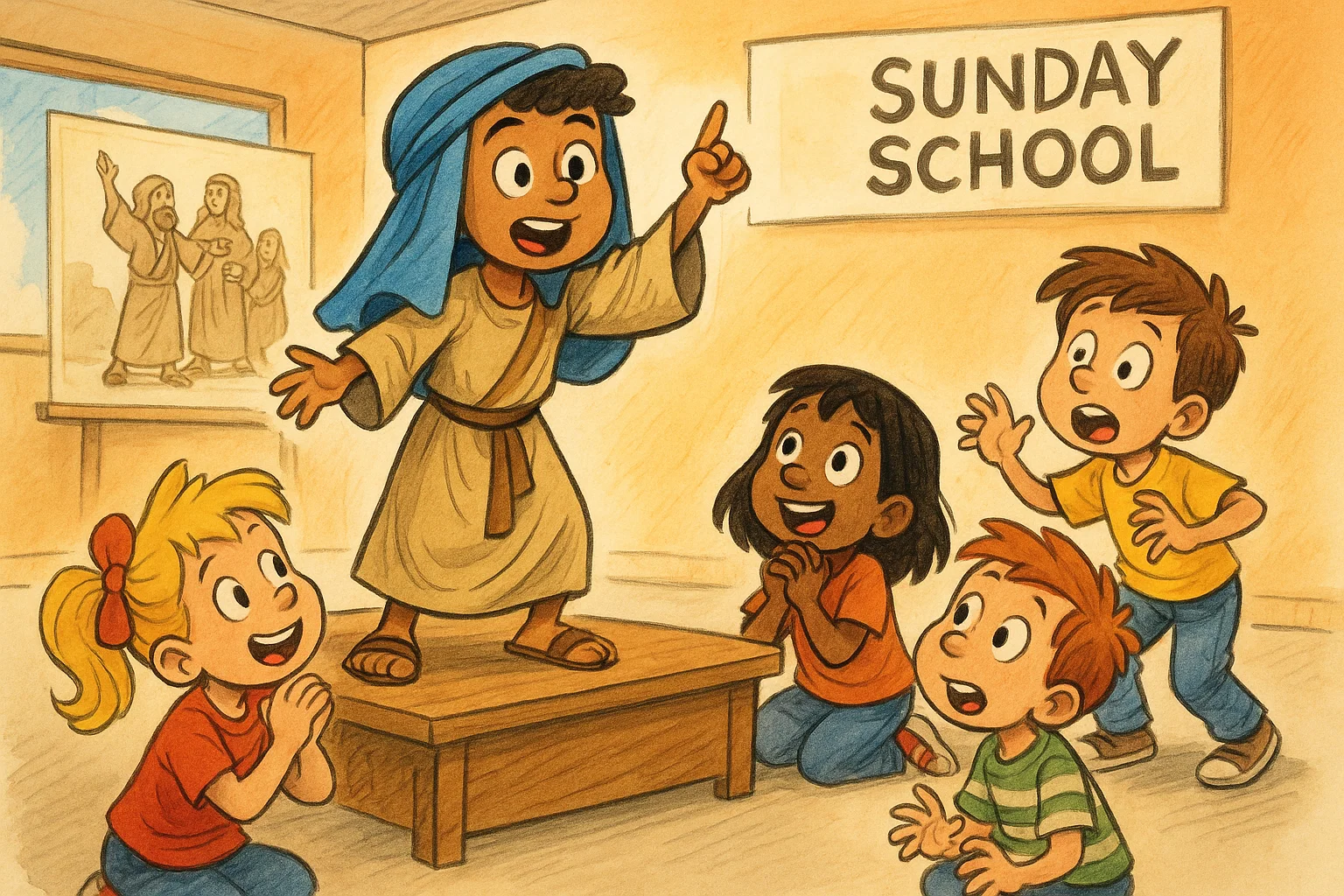
Drama and storytelling tap into children’s natural love of imagination while helping them internalize biblical narratives. These activities work especially well because they transform children from passive listeners into active participants in God’s story.
First Person Testimony Skits
Encourage children to step into the sandals of Bible characters by performing first-person accounts of famous stories. Rather than simply retelling events, children speak as if they were actually present, sharing their thoughts, feelings, and reactions to miraculous events.
A child portraying one of the disciples might say, “I couldn’t believe my eyes when Jesus turned that little boy’s lunch into enough food for thousands of us! My stomach was rumbling, and I was worried we’d have to send everyone away hungry.” This perspective helps kids connect emotionally with the human elements of biblical narratives.
Popular characters for first-person skits:
- Mary at the tomb discovering Jesus’s resurrection
- Peter walking on water with Jesus
- The boy who shared his lunch for the feeding of 5,000
- Zacchaeus climbing the tree to see Jesus
- The woman at the well meeting Jesus
Provide simple costume pieces like robes, sandals, or head coverings to enhance the experience. The goal isn’t theatrical perfection but rather helping children imagine themselves within God’s ongoing story. These performances often spark deep questions about how they might have responded in similar situations.
Comic Strip Story Creation
Combine modern storytelling formats with ancient wisdom by having children create comic strips featuring their favorite Bible stories. Provide templates with empty panels and encourage kids to add dialogue bubbles, sound effects, and artistic details that bring characters to life.
This activity particularly appeals to visual learners who might struggle with traditional reading comprehension but excel at understanding sequential art. Children naturally focus on character emotions, motivations, and relationships as they decide what each panel should communicate.
Many teachers discover that children include contemporary elements in their comics—showing biblical characters with modern expressions or situations they can relate to. Rather than correcting these adaptations, use them as discussion starters about how timeless biblical principles apply to current challenges.
Finish The Story
Start familiar Bible stories but stop at crucial turning points, inviting children to predict or imagine what happens next. This technique works particularly well with stories like Daniel in the lion’s den or David facing Goliath, where dramatic tension naturally builds to a climactic moment.
After children share their predictions, reveal the actual biblical conclusion and discuss why God’s solutions often surprise us. This approach helps kids understand that God’s ways are higher than human wisdom while encouraging them to think critically about problem-solving and faith.
Create variations by asking children to imagine alternative endings or consider how they might have acted as different characters in the story. These discussions often reveal children’s natural understanding of right and wrong while providing opportunities to address their real-life challenges through biblical wisdom.
Ideas for Specific Lessons
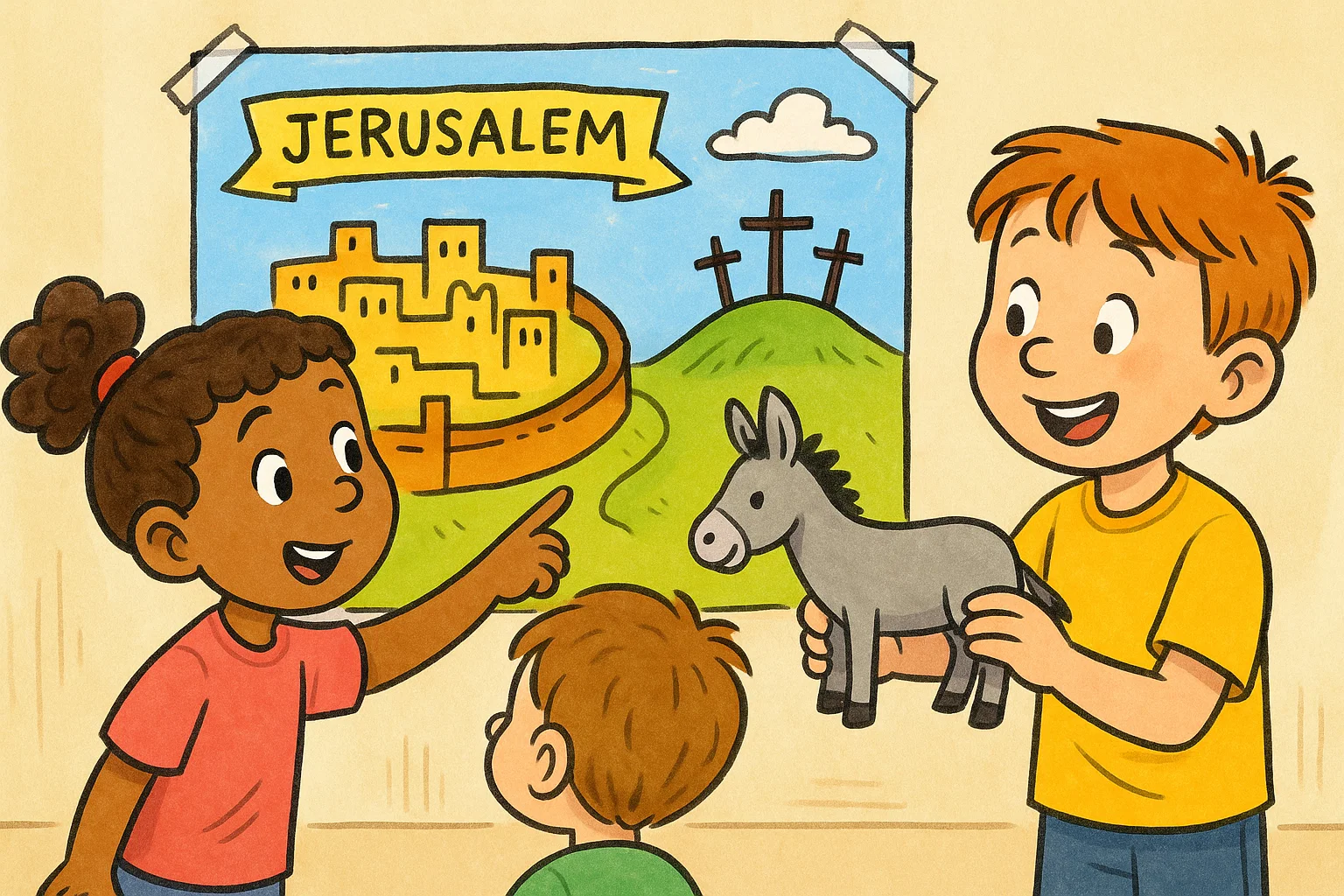
Target specific biblical narratives with activities designed to highlight particular character traits, moral lessons, or theological concepts. These focused approaches help children understand not just what happened in Bible stories, but why these events matter for their own spiritual development.
Good Samaritan Role Play ❤️
Set up a realistic scenario where children encounter someone who needs help, then guide them through decision-making processes that mirror the Good Samaritan’s choices. Create stations representing different characters: the injured traveler, the priest who passes by, the Levite who avoids involvement, and the Samaritan who stops to help.
Children rotate through each role, experiencing the story from multiple perspectives. When playing the injured person, they feel vulnerability and need. As the priest or Levite, they confront the temptation to prioritize personal convenience over compassion. Taking the Samaritan’s role helps them practice sacrificial kindness.
Follow the role play with discussion questions that connect to their daily experiences: “When have you seen someone who needed help at school?” or “What stops us from helping others sometimes?” These conversations help children identify real opportunities to live out Jesus’s teaching about loving their neighbors.
David Spares King Saul’s Life Activity
Transform this complex story of mercy and forgiveness into an interactive experience that helps children understand the difficulty and importance of treating enemies with kindness. Set up your classroom like Saul’s cave, dimming lights and creating hiding spots with blankets or furniture.
Have children take turns playing David, sneaking close enough to “cut a piece of Saul’s robe” (use fabric scraps) while the “king” sleeps. The physical challenge of moving quietly and carefully helps them appreciate David’s self-control and the risk he took.
The powerful teaching moment comes when “David” reveals himself and explains why he chose mercy over revenge. Children often express surprise at David’s decision, opening discussions about forgiveness, respect for authority, and trusting God’s justice rather than taking matters into our own hands.
Daniel and the Lion’s Den Activity 🦁
Create an immersive experience that helps children understand both Daniel’s faith and God’s protection. Transform your classroom into ancient Babylon by setting up a “prayer station” where Daniel prayed three times daily, despite the king’s decree.
Steps for the Daniel activity:
- Set up a designated prayer corner with pillows or mats
- Explain the king’s law forbidding prayer to anyone except him
- Have children practice Daniel’s decision to pray anyway
- Create the “lion’s den” using chairs or cardboard
- Act out God’s protection and Daniel’s rescue
- Discuss times when following God might be difficult
Have children practice Daniel’s prayer routine, discussing how difficult it would be to continue praying when it meant facing serious consequences. Use stuffed lions or lion pictures to create the “den,” but focus more on Daniel’s courage than on frightening imagery.
The lesson’s climax involves children emerging from the “den” unharmed, just like Daniel. This physical experience helps them understand that God protects those who remain faithful, even in scary situations. Follow up by discussing times when doing the right thing feels scary and how they can find courage through prayer and trust in God.
| Activity Type | Best Age Group | Prep Time | Key Learning Outcome |
| Bible Relay Race | 6-12 years | 15 minutes | Scripture memorization + teamwork |
| Scavenger Hunt | 8-14 years | 30 minutes | Story comprehension + problem-solving |
| Armor of God Craft | 5-10 years | 45 minutes | Spiritual protection concepts |
| Good Samaritan Role Play | 7-12 years | 20 minutes | Practical compassion application |
FAQ
How do I adapt these activities for different age groups in the same class?
Mixed-age classes benefit from buddy systems where older children mentor younger ones. Modify games by giving different roles—older kids can read clues while younger ones search for items. For crafts, provide pre-cut pieces for little hands while challenging older children with more complex assembly. The key is ensuring everyone contributes meaningfully to the shared experience.
What if I have limited space or supplies for these activities?
Most activities can be adapted for small spaces and minimal budgets. Bible charades requires no materials and works in tight quarters. Paper and pencil games like biblical word searches or simple drawing activities need minimal supplies. Focus on creativity over resources—children often prefer simple, high-energy games over elaborate productions.
How can I ensure these fun activities still teach meaningful Bible lessons?
Always connect activities directly to your lesson objectives through intentional debriefing. Ask specific questions about what children learned, how biblical characters made good choices, and how they can apply these lessons at home or school. The fun draws children in, but purposeful discussion ensures spiritual growth occurs alongside entertainment.
What should I do if children get too excited or competitive during games?
Establish clear expectations before starting any activity, emphasizing Christian character over winning. Pause games when necessary to address unsportsmanlike behavior, using these moments as teaching opportunities about kindness and self-control. Consider implementing team cheers that celebrate everyone’s efforts rather than just declaring winners.
How often should I incorporate these types of activities into my lessons?
Balance is crucial for effective teaching. Plan one major interactive activity per lesson, supplemented by shorter games or discussion techniques. Too many activities can feel chaotic, while too few may lose children’s attention. Observe your class’s response and adjust accordingly—some groups thrive on high energy while others need more structured, calm approaches.
